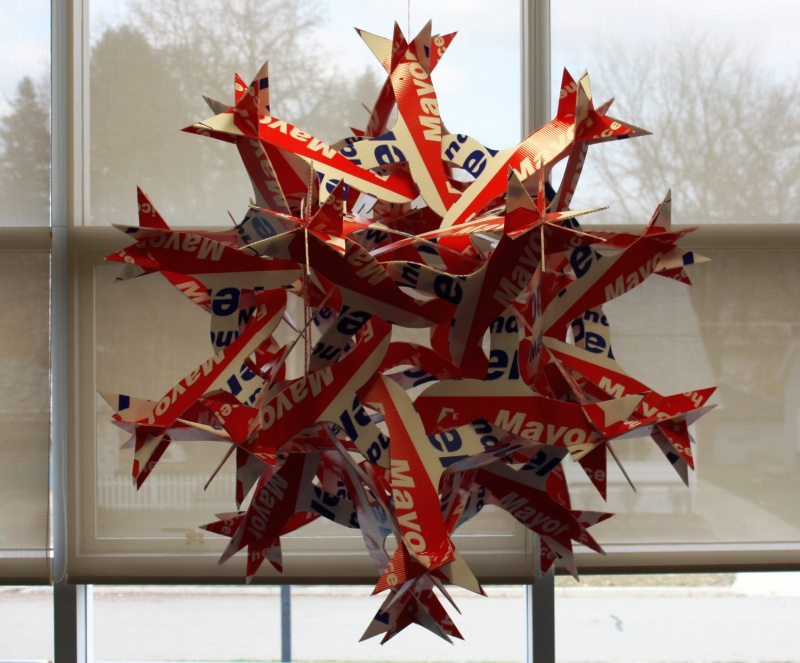
Here's a big construction I made
with a group of students and faculty at Albion College in
Michigan. It recycles plastic campaign signs that weren't
needed anymore on the day after the election. There are
sixty components and each looks vaguely like a running man.
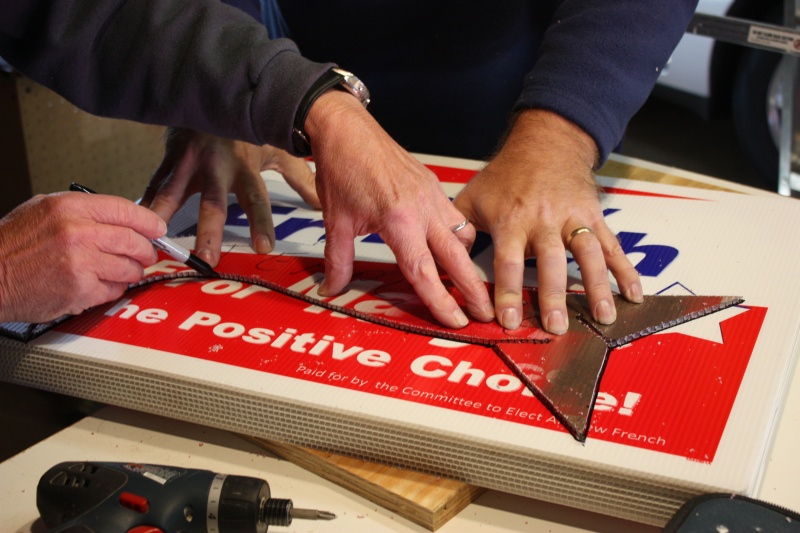
The first step was to make a master
template and then trace it on stacks of signs. These signs
are 18 inches by 24 inches, so the template is scaled to just
fit in that area. If you want to make a copy of this
design, start by printing out the
template
(pdf version)
at the appropriate scale for your material.
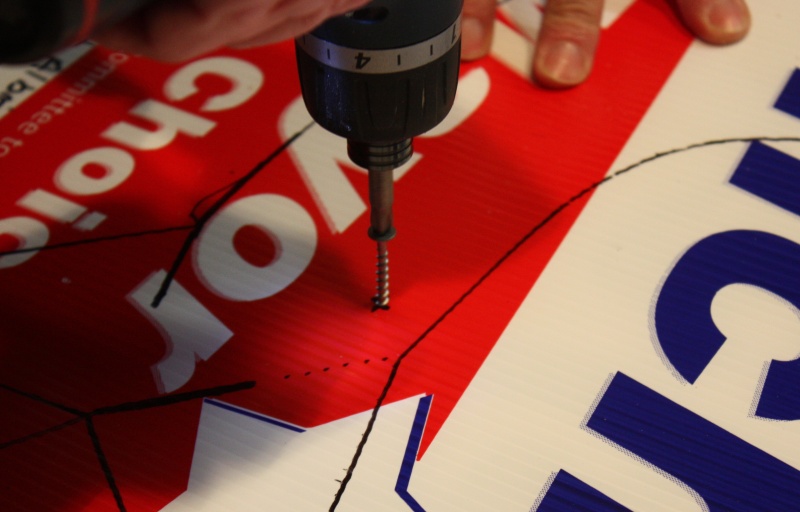
We made stacks of nine sign boards and held them together with
sheet-rock screws. This allowed cutting nine at a time in
one operation.
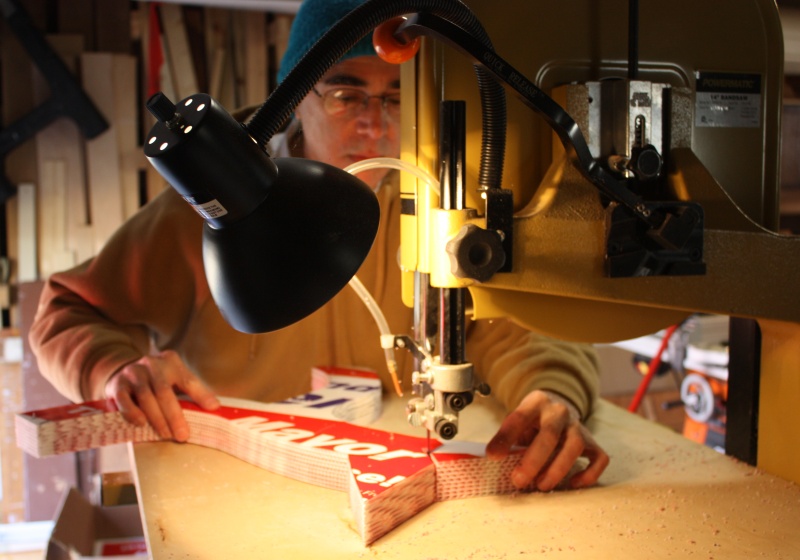
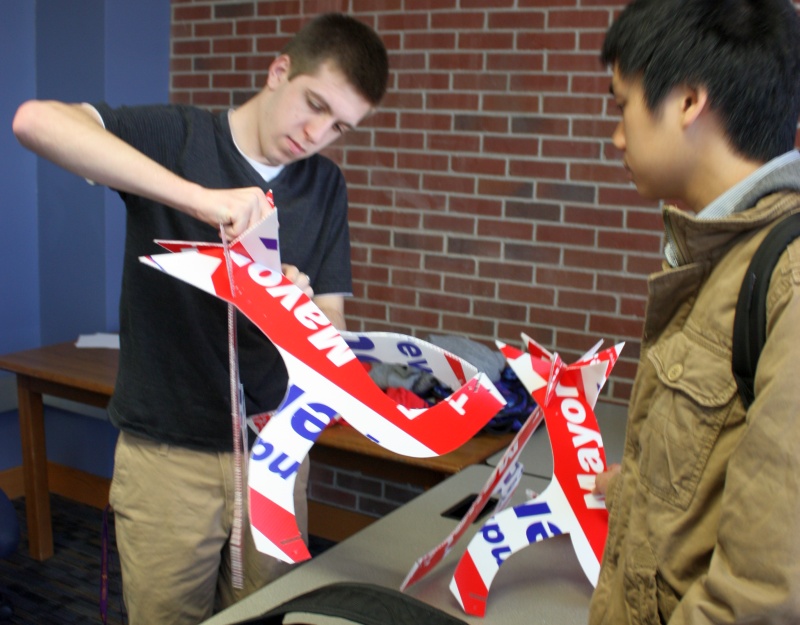
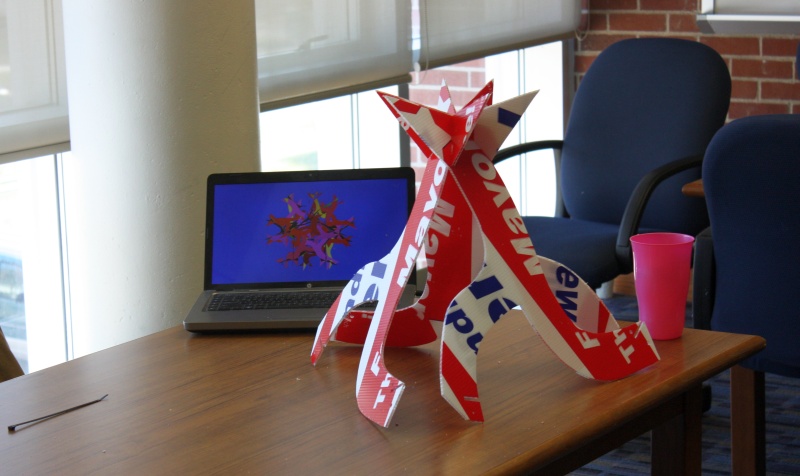
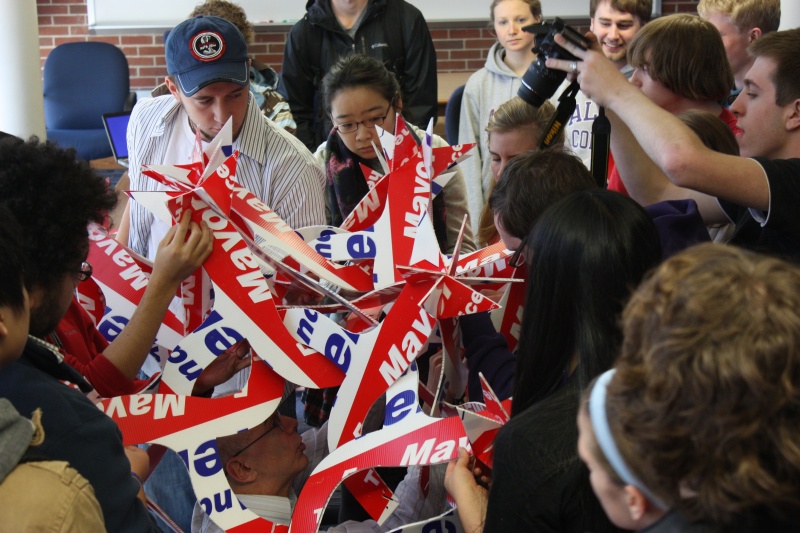
We started by working up in the air, holding the modules in
their relative positions and making foot connections. We
first did a cycle of five modules, then another group of five
around those.
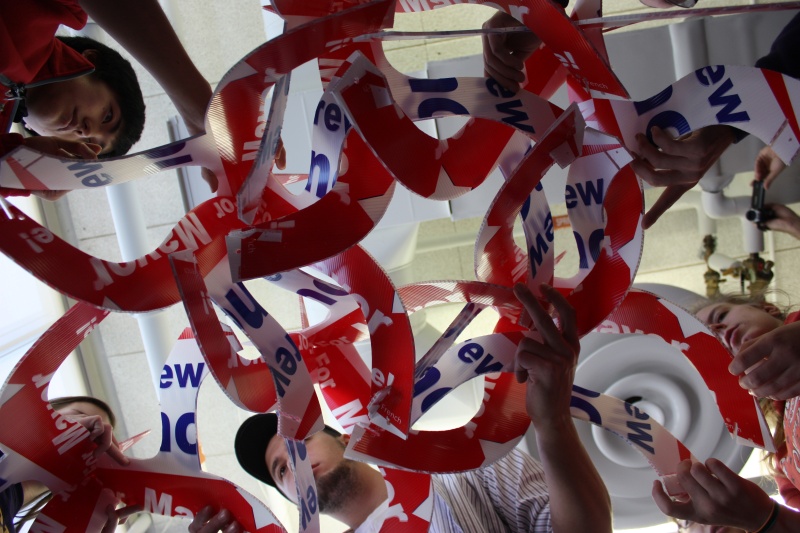
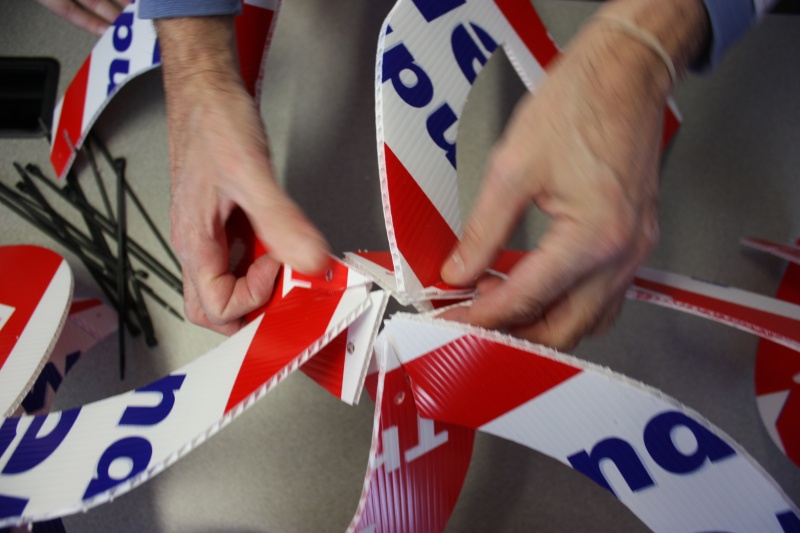
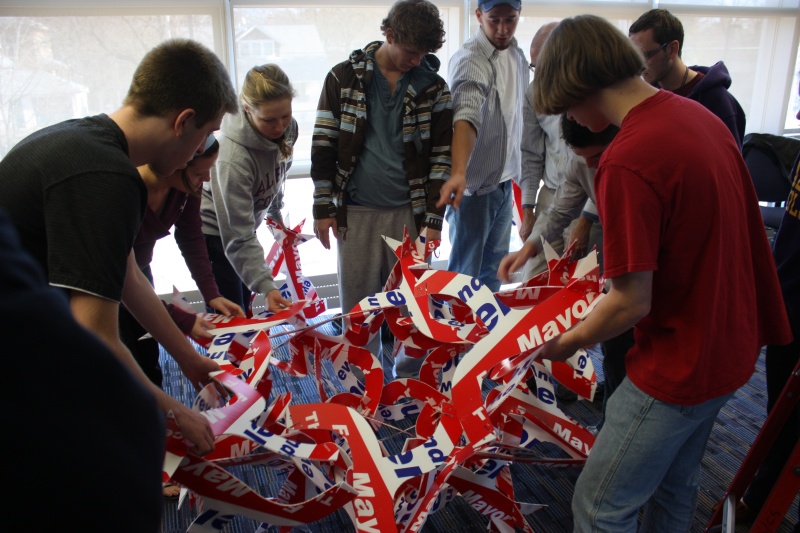
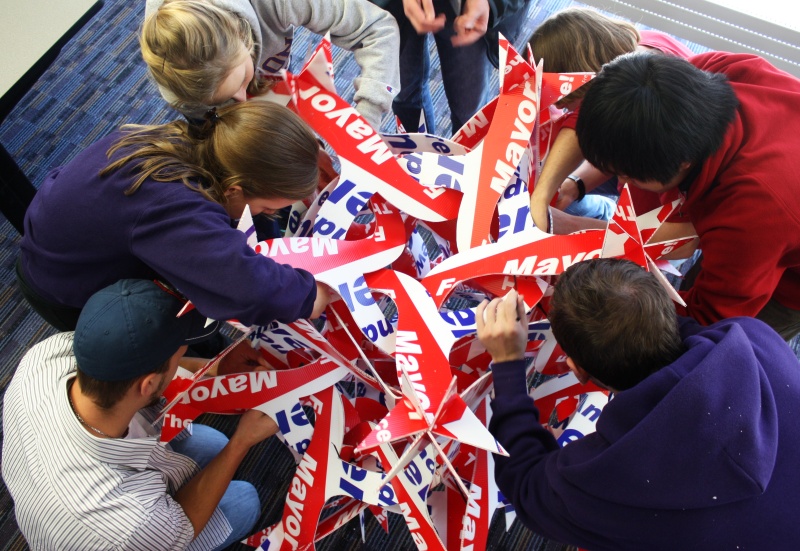


A band saw easily cuts this
corrugated plastic. For the slots, you need to cut out
a width roughly equal to the thickness of the
material.
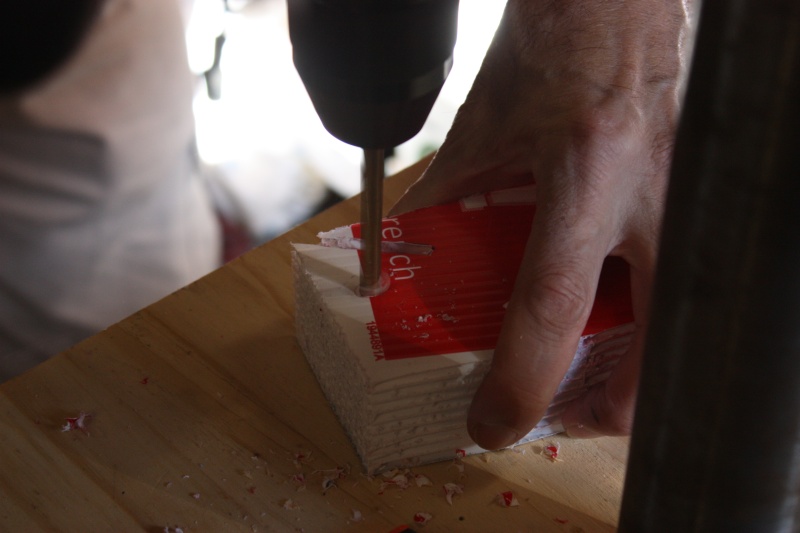
Two holes are drilled in the back feet. Cable ties will later go through the holes to hold the parts together.

Two holes are drilled in the back feet. Cable ties will later go through the holes to hold the parts together.

At the assembly event, we
started by making modules of three parts. The slots at
the head join in a cycle, so one ear needs to be bent to
make the third connection. But it straightens out
nicely and can't slide apart.

On my laptop, I brought along a
computer model of the final result that we could use as a
guide to assembly. Twenty modules are arranged more or
less like an icosahedron. The feet meet in groups of six and
the connection is hidden under another module, so it is
tricky to visualize how everything interweaves.


Looking up from below at the
first five modules shows how they form a pentagonal
opening. When complete, there will be twelve of these
openings. The "Twenty Twelve" in the title is the
number of modules and openings (and also the year).

Here's what the foot
connections look like. Each front foot mates with a back
foot, and the three back feet join like the corner of a
cube. It is all held together with three cable ties
that go through holes in two adjacent feet. The
connection is tricky because all this sits in the basement
of another module, which gets in the way when you try to
access the holes.

With ten modules together, we
turned it over and sat it on the rug. The assembly
algorithm is just to keep adding more modules to the growing
structure.

All the slots fit with no
problems, but reaching inside to thread the cable ties
through the holes wasn't easy. All together, it took
about two and a half hours in the shop to make the parts and
then an hour and ten minutes for the assembly.
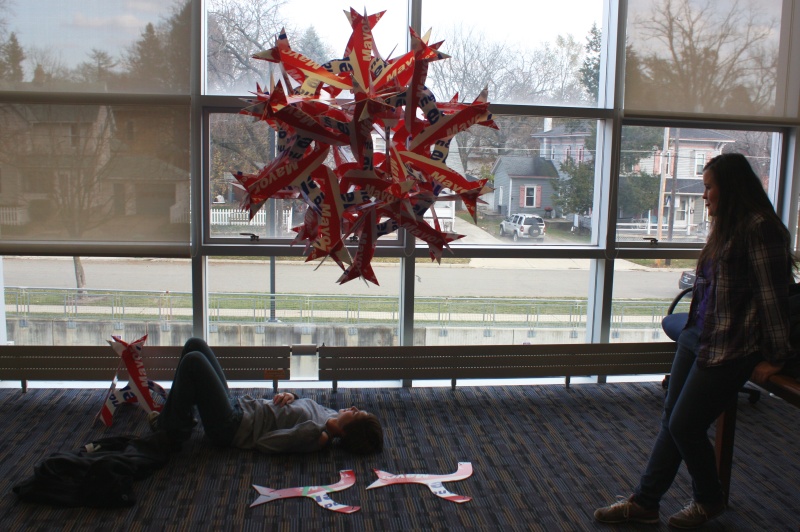

The result is strong enough
to hang from one point so it spins slowly with the air
currents. There's a nice view from below. To
get a better understanding of the design, watch the assembly video.
Thank you very much everyone who
participated, including Andrew French for providing the signs
and Ron Fryxell for use of his shop, with a special thank you
to Dave Reimann
for inviting me and taking these pictures.